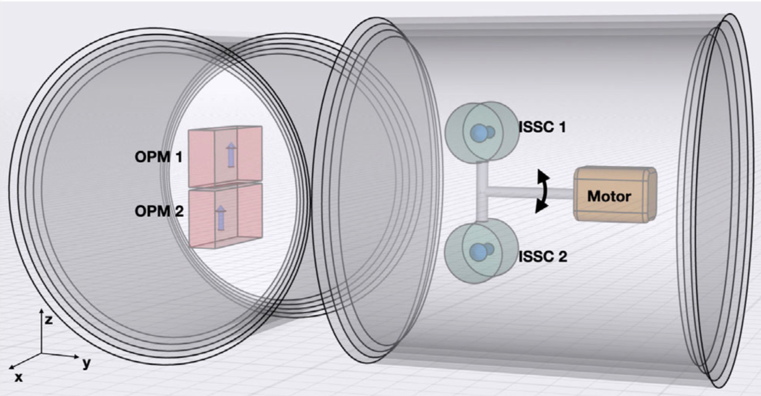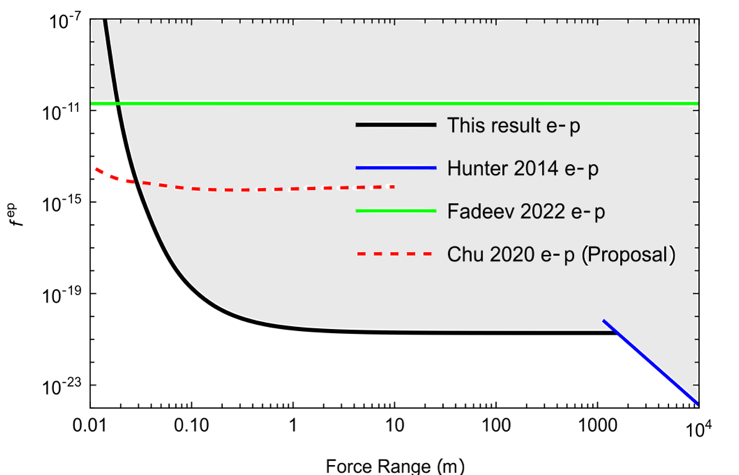The standard model of physics points out that there are four basic interactions in nature: gravity, electromagnetic force, strong interaction force, and weak interaction force. However, the standard model is not perfect, for example, it does not contain dark matter particles. In recent decades, exploring new physics beyond the standard model, including searching for dark matter particles, has been an important direction in the field of basic physics research. In various experimental schemes, the use of precision measurement technology to detect the presence of novel interactions beyond the standard model (also known as the "fifth force") provides an important method for discovering new physics and searching for dark matter particles.
The exotic force that can couple to the spins of microscopic particles is an important candidate for the fifth force. For example, axion, one of the possible constituents of dark matter predicted by theoretical physicists, is a particle that can transfer spin-dependent exotic forces. According to theoretical predictions, the spin related singularity force between two particles depends on their spin and is also related to factors such as their relative position and velocity. Due to the interaction being extremely weak, there is currently no experimental evidence to suggest the existence of a fifth force. Nevertheless, it is exciting that with the development of precision measurement technology, scientists can continuously improve measurement precision, thereby detecting the force with a higher sensitivity, and continuously lowering the upper limit of the corresponding coupling coefficients as long as the fifth force is not detected.
Recently, Associate Professor Yong-Chun Liu from the Department of Physics at Tsinghua University and his collaborators proposed a new experimental scheme, providing new limits on the coupling coefficient of spin-dependent exotic forces. This experiment uses two sets of specially designed pure iron-compensated cobalt magnets as spin sources for generating spin-dependent exotic forces, which have extremely high electron spin density and extremely weak magnetic leakage. The detection of spin-dependent exotic forces can be achieved using a highly sensitive atomic magnetometer. When the spin source is rotated using a DC motor, if spin-dependent exotic forces exist, the coupling between the spin source and the spin in the atomic magnetometer produces weak spin-spin-velocity-dependent interaction, which is similar to that of a magnetic field. By designing two sets of atomic magnetometers with opposite sensitive axes, efficient differential suppression of common mode noise signals can be achieved, while maintaining sensitivity to the effective magnetic field of spin-dependent exotic forces.

Figure 1: Schematic diagram of the measurement device of spin-dependent exotic forces. On the left is the atomic magnetometer, and on the right is the spin source.
By using a motor to drive the spin source to periodically rotate clockwise and counterclockwise, effective modulation of the measured signal can be achieved, avoiding the influence of DC noises. By analyzing signals from multiple sets of experimental data, false signals caused by various noise sources can be effectively removed. Through statistical analysis of long-term measurement data, no signal for the fifth force has been found, but the experimental results provide new limits on the electron-proton coupling coefficient. Due to the high spin density, high magnetic field measurement sensitivity and energy resolution of the designed experimental scheme, as well as the effective suppression of common-mode noise, the coupling coefficient limit obtained in this experiment is ten orders of magnitude better than the limit obtained using other methods at the centimeter to kilometer force-range scale. With further future development of technology, it is expected to measure the presence of a fifth force with an even higher sensitivity.

Figure 2: Limitation range of the coupling coefficients of spin-dependent exotic forces.
This work was jointly completed by Yong-Chun Liu’s research group at the Department of Physics of Tsinghua University, Beihang University and Dmitry Budker’s research group at the Helmholtz Institute, Johannes Gutenberg University, Mainz, Germany. The article was published on Physical Review Letters on March 28, 2023 with the title "Constraints on Spin-Spin Velocity-Dependent Interactions" [Phys. Rev. Lett. 130, 133202 (2023)]. The first author of the paper is Dr. Ji Wei, a postdoctoral fellow at the University of Mainz in Germany (the 2019 doctoral graduate of the Department of Physics of Tsinghua University, served as the research assistant of Yong-Chun Liu’s Group from August 2020 to March 2021). The corresponding authors of the paper are associate professor Yong-Chun Liu from Department of Physics of Tsinghua University, and associate researcher Wei Kai from Beihang University. This work was supported by the Key-Area Research and Development Program of Guangdong Province, the National Natural Science Foundation of China, the National Key R&D Program of China, the State Key Laboratory of Low-Dimensional Quantum Physics, the DFG Cluster of Excellence PRISMA+, and the Frontier Science Center for Quantum Information.
Article link: https://journals.aps.org/prl/abstract/10.1103/PhysRevLett.130.133202